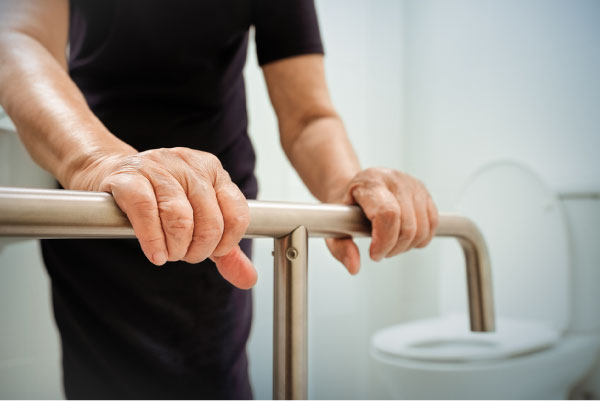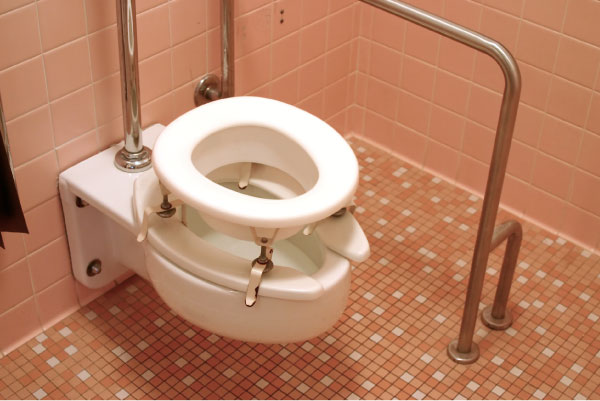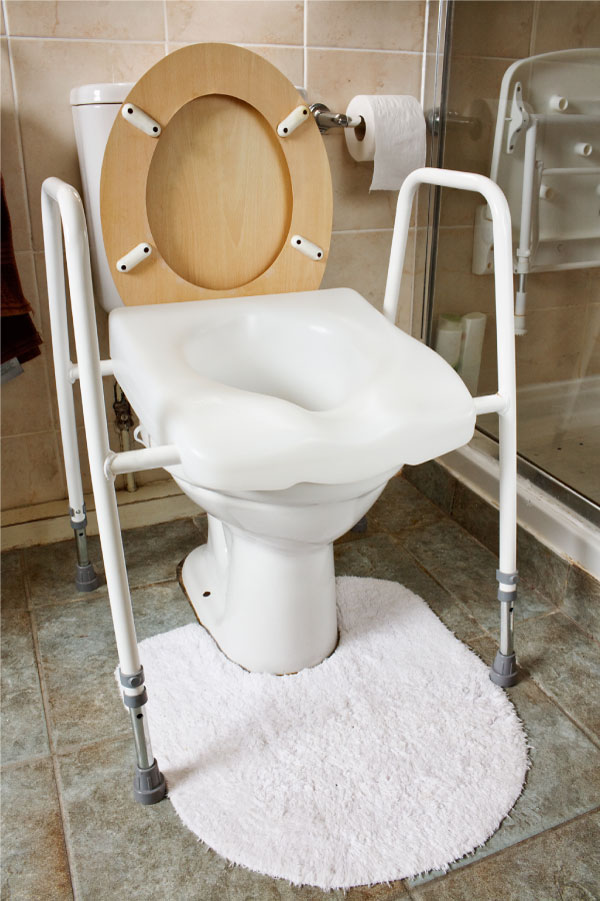Raised Toilet Seats: A Simple but Essential Home Modification for Aging in Place
Staying in the comfort of home is a top priority for many older adults. To age in place successfully, seniors often need home modifications that support safety, mobility, and independence. One of the most important changes you can make in the bathroom is installing a raised toilet seat. Sometimes called “elevated toilet seats,” these devices come in various sizes and styles, and can make a significant difference for anyone with limited mobility. However, choosing the wrong kind of raised seat can actually increase the risk of falls – so it’s important to match the product to the user’s specific needs.
Why Raised Toilet Seats Matter
Bathrooms are among the most hazardous places in the home, especially for seniors. Many falls happen while sitting down or getting up from the toilet. A raised toilet seat helps reduce that risk while promoting privacy and preserving independence. For many older adults, maintaining the ability to use the bathroom without assistance is crucial to avoiding a move to assisted living. That often requires home safety modifications like ramps, grab bars, extra stair rails, and a bathroom makeover. The benefits of an elevated toilet seat include:
- Improved Safety: A raised seat reduces the distance someone has to bend, which lowers the risk of falls and strain—especially for those with joint or balance issues.
- Increased Privacy: This is a personal activity where most people prefer not to have help.
- Enhanced Independence: The ability to handle daily tasks like toileting on one’s own helps seniors live independently for longer.
Features to Consider

Raised toilet seats come in many shapes, sizes, and configurations. Take time to compare options and choose one that fits the user’s physical needs and the layout of the bathroom.
- Toilet Shape: Make sure the seat matches your toilet – either round or elongated.
- Height: Most models add 2–6 inches in height. The user’s feet should still rest flat on the floor to allow for safe standing.
- Weight Capacity: Standard seats support 250–300 pounds. Bariatric models are available for users who need additional support.
- Lid Option: Consider a model with a lid, especially if hygiene is a concern. Closing the lid before flushing reduces the spread of germs.
- Armrests: These provide extra support, but only if the seat is securely mounted. Unstable armrests can be dangerous. In many cases, grab bars installed beside the toilet provide better stability.
- Specialty Options: Slip-in brackets with asymmetrical designs can help users recovering from leg or knee surgery by offering easier access from one side.
Types of Raised Toilet Seats

Different designs offer different levels of stability and ease of use. The best option depends on the user’s condition, balance, and long-term needs:
- Clip-On Seats: These portable models fit over the existing toilet seat and are easy to install and remove. They’re ideal for temporary use.
- Non-Locking Seats: A basic solution for people who have good balance but need a little help with sitting or standing. They sit on top of the toilet bowl without locking mechanisms or armrests.
- Locking Seats: These provide more security by attaching to the toilet with clamps or bolts. Some include armrests. Always confirm the seat is stable before relying on arm support.
- Safety Frames: These freestanding structures are placed over the toilet and include a separate elevated seat. They provide maximum stability and are great for heavier users. Many models allow for adjustments in height and width, but they do require more space.
Some shower chairs also double as commodes, making it easier for users to move between the toilet and shower – especially helpful in small bathrooms or during post-surgical recovery.
Final Safety Tips
Even if your raised toilet seat has armrests and is securely attached, it’s smart to install grab bars near the toilet for added safety.
While often associated with older adults, raised toilet seats can benefit anyone with limited mobility, joint pain, or balance issues. They’re a low-cost home upgrade that can make a big difference in quality of life and help extend independence for years to come.















